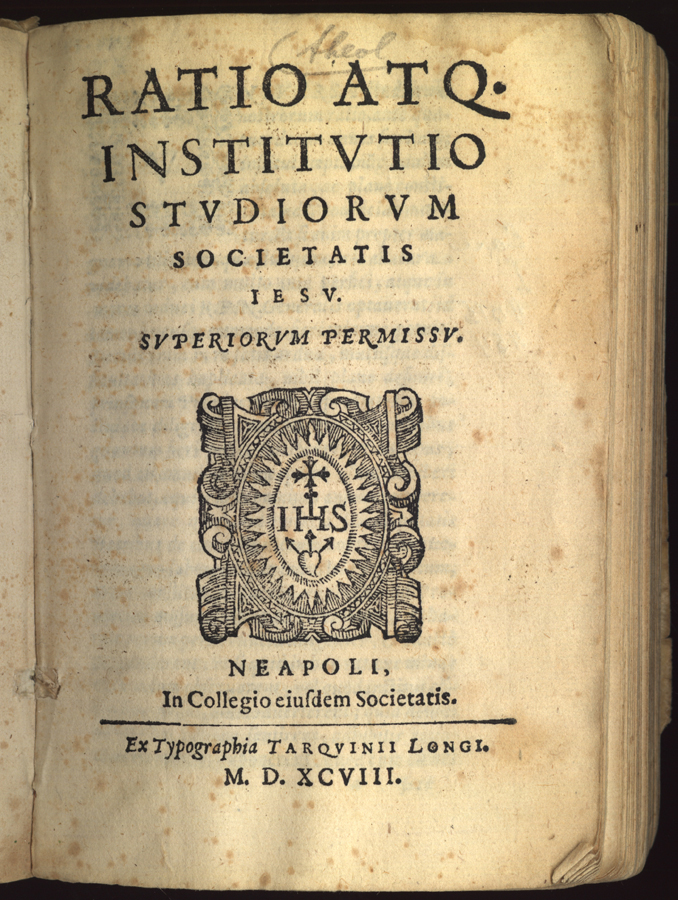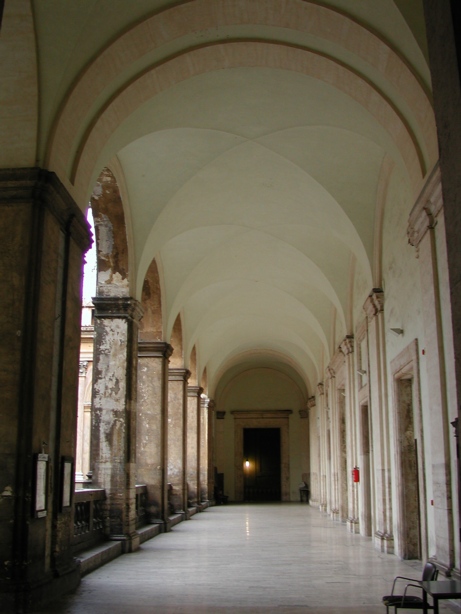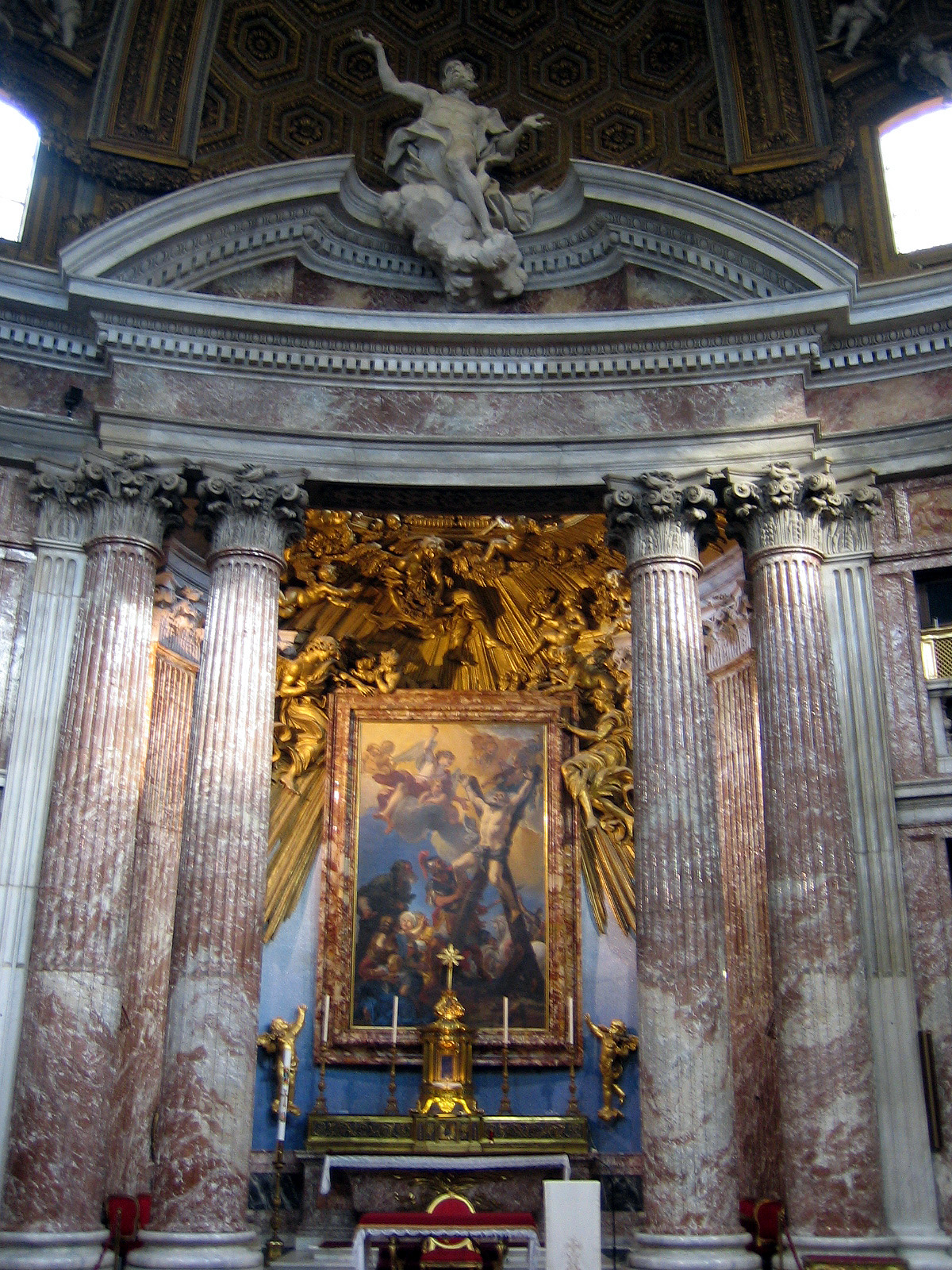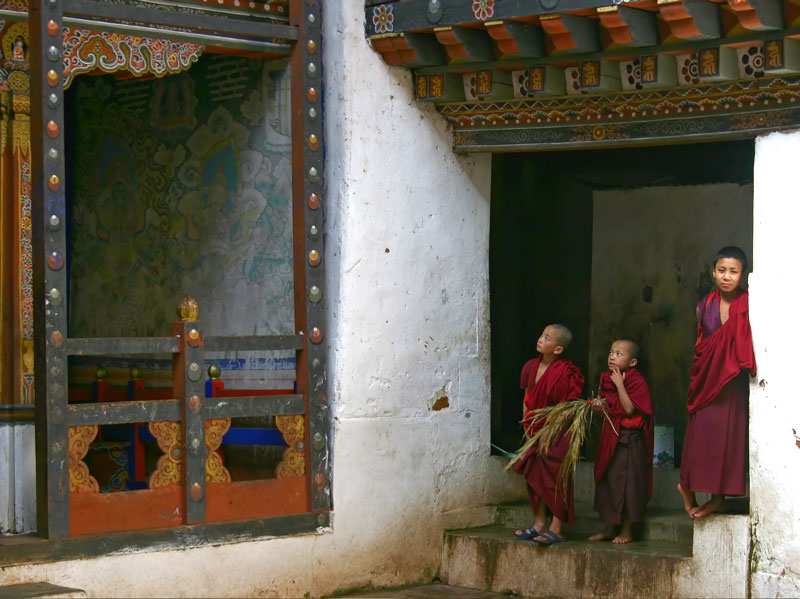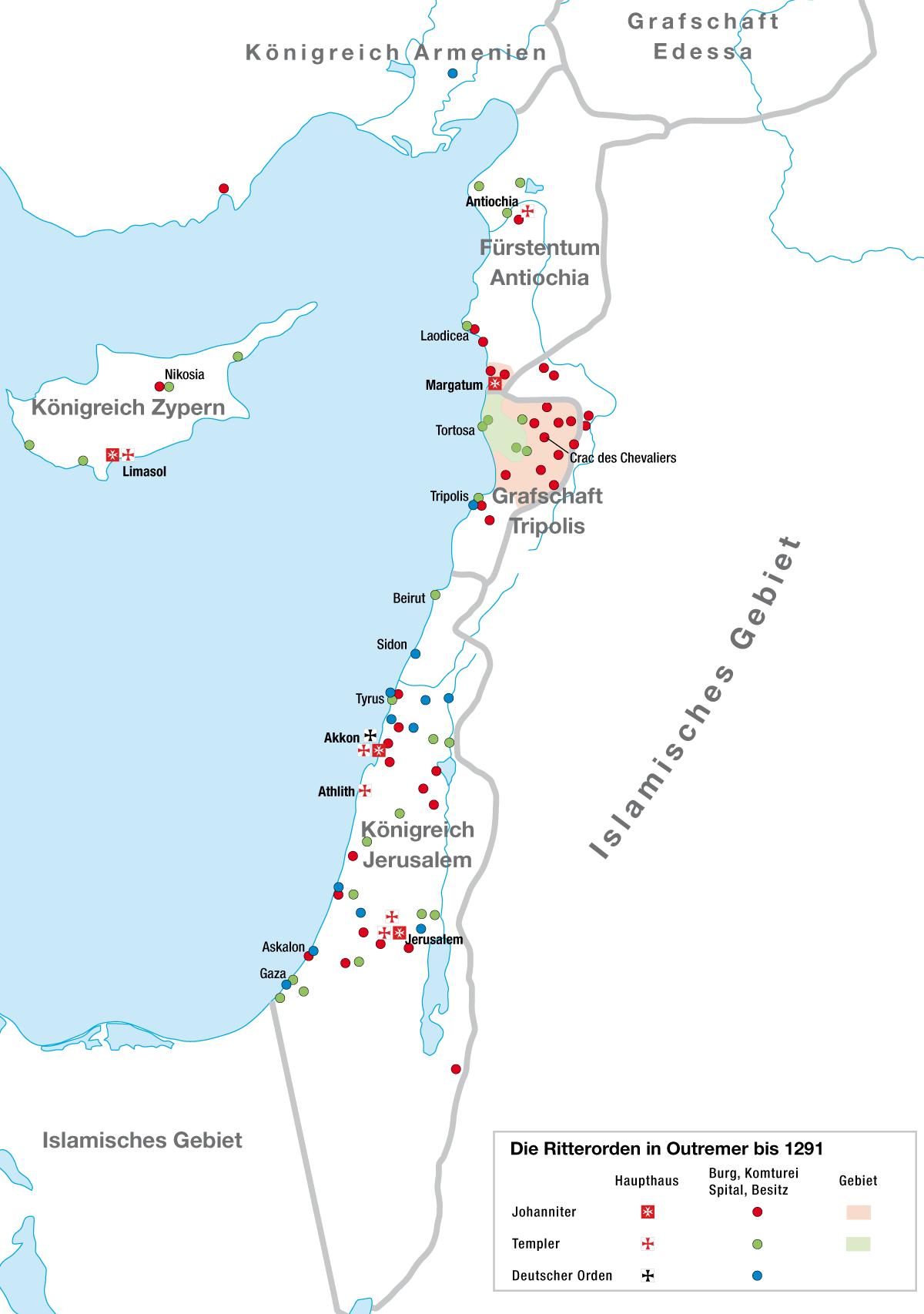|
Paolo Beni
Paolo Beni (1553–1625) was an Italian humanist, literary theorist, theologian and philosopher. Beni received a doctorate in theology in 1576. He joined the Society of Jesus in 1581, but was expelled from the order in 1593. He lectured at the Sapienza University of Rome, University of Rome from 1594 to 1599 and was a professor at the University of Padua from 1600 until 1623. Beni was on poor terms with his family and was frequently involved in controversy. Nevertheless, he was a prolific writer, publishing almost a book a year on top of numerous unpublished works. Life Family and education Paolo Beni was born in Gubbio, probably on 10 January 1553. He often used the sobriquet ''Eugubinus'' ('from Gubbio'). He was descended on both sides from the local nobility of long standing. His mother, Modesta, belonged to the Panfili, a family first attested in Gubbio in 1114. His father, Francesco, belonged to the Beni, first attested in Gubbio in 1049. Beni had five siblings, two sisters ( ... [...More Info...] [...Related Items...] OR: [Wikipedia] [Google] [Baidu] |
Sapienza University Of Rome
The Sapienza University of Rome ( it, Sapienza – Università di Roma), also called simply Sapienza or the University of Rome, and formally the Università degli Studi di Roma "La Sapienza", is a public research university located in Rome, Italy. It is one of the largest European universities by enrollments and one of the oldest in history, founded in 1303. The university is one of the most prestigious Italian universities in the world, commonly ranking first in national rankings and in Southern Europe. In 2018, 2019, 2021 and 2022 it ranked first in the world for classics and ancient history. Most of the Italian ruling class studied at the Sapienza. The Sapienza has educated numerous notable alumni, including many Nobel laureates, Presidents of the European Parliament and European Commissioners, heads of several nations, notable religious figures, scientists and astronauts. In September 2018, it was included in the top 100 of the QS World University Rankings Graduate Emplo ... [...More Info...] [...Related Items...] OR: [Wikipedia] [Google] [Baidu] |
Bologna
Bologna (, , ; egl, label=Emilian language, Emilian, Bulåggna ; lat, Bononia) is the capital and largest city of the Emilia-Romagna region in Northern Italy. It is the seventh most populous city in Italy with about 400,000 inhabitants and 150 different nationalities. Its Metropolitan City of Bologna, metropolitan area is home to more than 1,000,000 people. It is known as the Fat City for its rich cuisine, and the Red City for its Spanish-style red tiled rooftops and, more recently, its leftist politics. It is also called the Learned City because it is home to the oldest University of Bologna, university in the world. Originally Etruscan, the city has been an important urban center for centuries, first under the Etruscans (who called it ''Felsina''), then under the Celts as ''Bona'', later under the Romans (''Bonōnia''), then again in the Middle Ages, as a free municipality and later ''signoria'', when it was among the List of largest European cities in history, largest Euro ... [...More Info...] [...Related Items...] OR: [Wikipedia] [Google] [Baidu] |
Claudio Acquaviva
Claudio Acquaviva, SJ (14 September 1543 – 31 January 1615) was an Italian Jesuit priest. Elected in 1581 as the fifth Superior General of the Society of Jesus, he has been referred to as the second founder of the Jesuit order. Early life and family Claudio Acquaviva was born in Atri, Abruzzo, the son of Giovanni Antonio Acquaviva d'Aragona, 9th Duke of Atri, descended from a noble family illustrious at the court of Naples for its patronage of humanist culture. His grandfather, Andrea Matteo Acquaviva (1456–1528), was a '' condottiere'' and humanist whose brother Belisario Acquaviva (1464–1528), Duke of Nardo, was also a noted man of letters. Some older texts, including those illustrated in this article, spell his name ''Aquaviva''. After initial studies of humanities (Latin, Greek and Hebrew) and Mathematics, he studied Jurisprudence in Perugia. He had heard of the Society of Jesus through his friendship with Francis Borgia and Juan de Polanco. He was particularly ... [...More Info...] [...Related Items...] OR: [Wikipedia] [Google] [Baidu] |
Milan
Milan ( , , Lombard language, Lombard: ; it, Milano ) is a city in northern Italy, capital of Lombardy, and the List of cities in Italy, second-most populous city proper in Italy after Rome. The city proper has a population of about 1.4 million, while its Metropolitan City of Milan, metropolitan city has 3.26 million inhabitants. Its continuously built-up List of urban areas in the European Union, urban area (whose outer suburbs extend well beyond the boundaries of the administrative Metropolitan cities of Italy, metropolitan city and even stretch into the nearby country of Switzerland) is the fourth largest in the EU with 5.27 million inhabitants. According to national sources, the population within the wider Milan metropolitan area (also known as Greater Milan), is estimated between 8.2 million and 12.5 million making it by far the List of metropolitan areas of Italy, largest metropolitan area in Italy and List of metropolitan areas in Europe, one of ... [...More Info...] [...Related Items...] OR: [Wikipedia] [Google] [Baidu] |
Republic Of Venice
The Republic of Venice ( vec, Repùblega de Venèsia) or Venetian Republic ( vec, Repùblega Vèneta, links=no), traditionally known as La Serenissima ( en, Most Serene Republic of Venice, italics=yes; vec, Serenìsima Repùblega de Venèsia, links=no), was a sovereign state and maritime republic in parts of present-day Italy (mainly northeastern Italy) that existed for 1100 years from AD 697 until AD 1797. Centered on the lagoon communities of the prosperous city of Venice, it incorporated numerous overseas possessions in modern Croatia, Slovenia, Montenegro, Greece, Albania and Cyprus. The republic grew into a trading power during the Middle Ages and strengthened this position during the Renaissance. Citizens spoke the still-surviving Venetian language, although publishing in (Florentine) Italian became the norm during the Renaissance. In its early years, it prospered on the salt trade. In subsequent centuries, the city state established a thalassocracy. It dominat ... [...More Info...] [...Related Items...] OR: [Wikipedia] [Google] [Baidu] |
Roman College
The Roman College ( la, Collegium Romanum, it, Collegio Romano) was a school established by St. Ignatius of Loyola in 1551, just 11 years after he founded the Society of Jesus (Jesuits). It quickly grew to include classes from elementary school through university level and moved to several successive locations to accommodate its burgeoning student population. With the patronage of Pope Gregory XIII, the final seat of the Roman College was built in 1584 near the center of Rome's most historic Pigna district, on what today is called Piazza del Collegio Romano, adding the church of St. Ignatius in 1626, and a renowned observatory in 1787. The college remained at this location for 286 years until the revolutionary Capture of Rome in 1870.In 1870, the new Italian government confiscated the property of the university and their building (that eventually became the Ennio Quirino Visconti Liceo Ginnasio), which forced the university to transfer to the Palazzo Gabrielli-Borromeo on the Vi ... [...More Info...] [...Related Items...] OR: [Wikipedia] [Google] [Baidu] |
Sant'Andrea Al Quirinale
The Church of Saint Andrew on the Quirinal ( it, Sant'Andrea al Quirinale, la, S. Andreae in Quirinali) is a Roman Catholic titular church in Rome, Italy, built for the Jesuit seminary on the Quirinal Hill. The church of Sant'Andrea, an important example of Roman Baroque architecture, was designed by Gian Lorenzo Bernini with Giovanni de'Rossi. History Bernini received the commission in 1658 and the church was constructed by 1661, although the interior decoration was not finished until 1670. The site previously accommodated a 16th-century church, Sant'Andrea a Montecavallo. Commissioned by former Cardinal Camillo Francesco Maria Pamphili, with the approval of Pope Alexander VII, Sant'Andrea was the third Jesuit church constructed in Rome, after the Church of the Gesù and Sant'Ignazio. It was to serve the Jesuit novitiate, which was founded in 1566. Bernini considered the church one of his most perfect works; his son, Domenico, recalled that in his later years, Bernini spent ... [...More Info...] [...Related Items...] OR: [Wikipedia] [Google] [Baidu] |
Novice
A novice is a person who has entered a religious order and is under probation, before taking vows. A ''novice'' can also refer to a person (or animal e.g. racehorse) who is entering a profession with no prior experience. Religion Buddhism In many Buddhist orders, a man or woman who intends to take ordination must first become a novice, adopting part of the monastic code indicated in the vinaya and studying in preparation for full ordination. The name for this level of ordination varies from one tradition to another. In Pali, the word is samanera, which means 'small monk' or 'boy monk'. Christianity Catholicism A novice in Catholic canon law and tradition, is a ''prospective'' member of a religious order who is being tried and being proven for suitability of admission to a religious order of priests, religious brothers, or religious sisters, whether the community is one of monks or has an apostolate. After initial contact with the community, and usually a period of ti ... [...More Info...] [...Related Items...] OR: [Wikipedia] [Google] [Baidu] |
Francesco Maria II Della Rovere, Duke Of Urbino
Francesco Maria II della Rovere (20 February 1549 – 23 April 1631) was the last Duke of Urbino. Biography Born at Pesaro, Francesco Maria was the son of Guidobaldo II della Rovere, Duke of Urbino, Count of Montefeltro and Vittoria Farnese , Princess of Parma. He was raised between 1565 and 1568 at the Royal court of Philip II of Spain. While there he met a Spanish girl and informed his father of his intention to marry her . ''History of the popes; their church and state (Volume III)'' by Leopold von Ranke ( Library, 2009) But his father would not allow it and demanded he return to Urbino. In 1570 Francesco Maria married [...More Info...] [...Related Items...] OR: [Wikipedia] [Google] [Baidu] |
Military Order (religious Society)
A military order ( la, militaris ordo) is a Christian religious society of knights. The original military orders were the Knights Templar, the Knights Hospitaller, the Order of Saint James, the Order of Calatrava, and the Teutonic Knights. They arose in the Middle Ages in association with the Crusades, both in the Holy Land, the Baltics, and the Iberian peninsula; their members being dedicated to the protection of pilgrims and the defence of the Crusader states. They are the predecessors of chivalric orders. Most members of military orders were laymen who took religious vows, such as of poverty, chastity, and obedience, according to monastic ideals. The orders owned houses called commanderies all across Europe and had a hierarchical structure of leadership with the grand master at the top. The Knights Templar, the largest and most influential of the military orders, was suppressed in the early fourteenth century; only a handful of orders were established and recogni ... [...More Info...] [...Related Items...] OR: [Wikipedia] [Google] [Baidu] |



